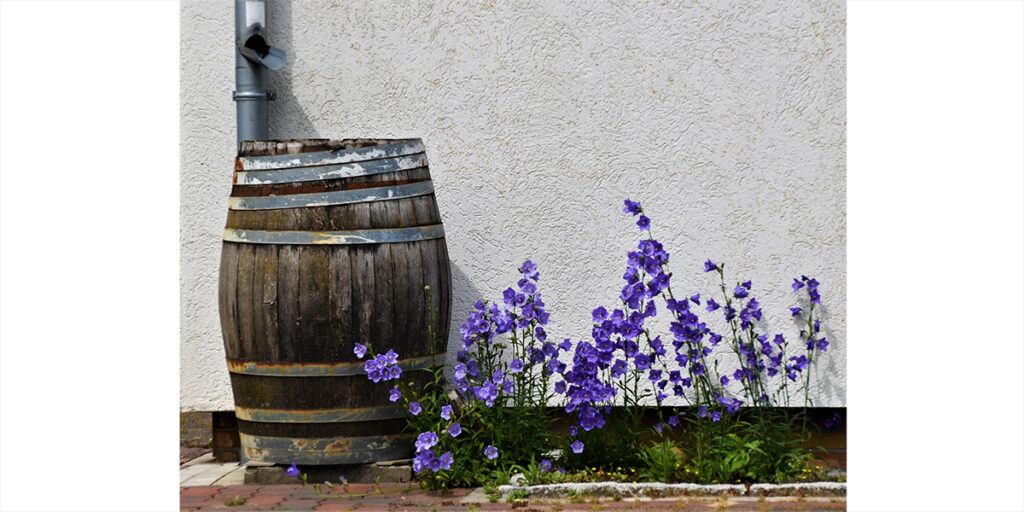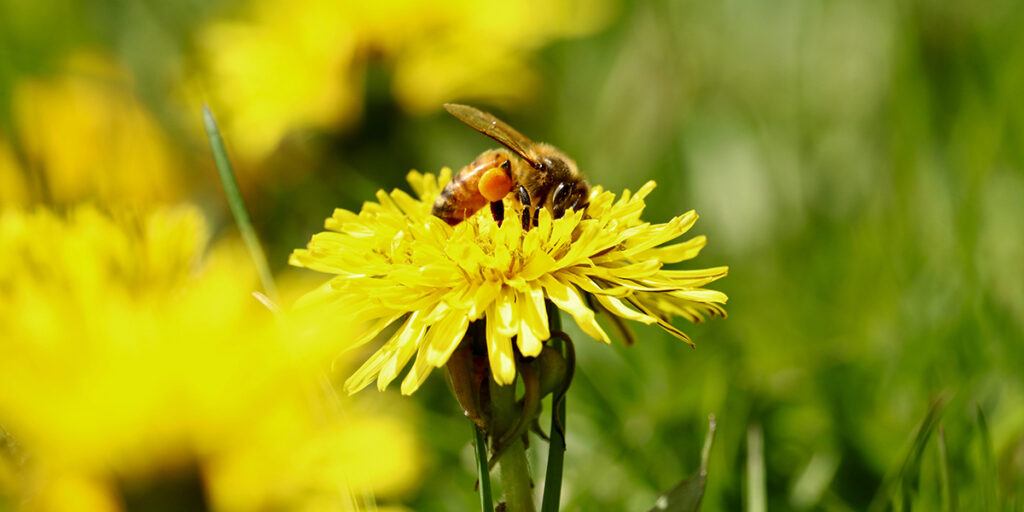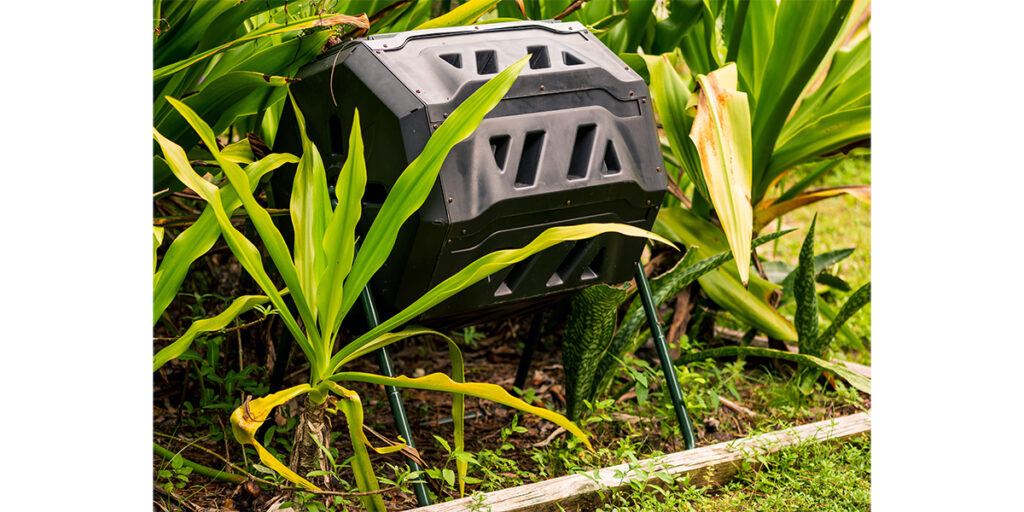
By Angelo Randaci, Earth’s Ally Horticulturist
Angelo’s passion for plants has led him to explore many areas of horticulture including research, grounds management, technical training, design and nursery management.
Personal stewardship is an innate human duty. New technologies, research, and understanding have allowed us to make better choices as stewards of our lands. We are the custodians, the caretakers. We oversee the work of nature by watching, studying, exploring, and learning.
One way to become mindful of how we treat our planet is by making incremental improvements. And we will become better stewards by transforming our gardening practices, by switching to more environmentally friendly methods both inside and outside our homes. It begins by taking small steps. Here are 5 small changes we can make to help the planet.
1. Commit to Less Lawn
Every year, American homeowners consume nearly 3 trillion gallons of water, 200 million gallons of gas (from mowing), and 70 million pounds of assorted pesticides to have a well-maintained lawn. All of those have a heavy environmental impact, but the devastating impact of these practices does not stop there. Lawns provide virtually no habitat for pollinators or other animals vital to our ecosystem. Pesticides and synthetic fertilizers applied to our lawns enter our rivers, lakes, streams, and oceans through runoff into our sewer systems.
Ways To Reduce Personal Impact
Look for places in your yard you can easily change to create a more diverse and sustainable landscape. These changes can begin with attention to conserving water and protecting wildlife. One way would be to dedicate an area of your lawn to growing a mixture of wildflowers, annuals, and native plants or allowing wildflowers to remain in your lawn.

If you are a bit too hesitant to begin big garden projects, simply begin by going for a more naturalized look. Plant low-growing turf species that require little or no mowing. Check with your local extension service to see which no-mow plants work best in your area. There are also commercially available no-mow lawn mixes which include creeping bunch-forming fescues that maintain a low profile.
Consider transforming lawn areas into attractive, functional outdoor living spaces as an extension of your home. Add a patio, deck, or fire pit for entertaining. Surround your new living space with beautiful plantings, incorporating a potpourri of different elements of color and appeal.
2. Collect Rainwater
Have you ever noticed how much your plants green-up after a good rain? It’s because our atmosphere contains 78 percent nitrogen. Rain distributes nitrogen from the atmosphere to the soil where microorganisms convert the nitrogen to a usable form for plant growth. Rainwater is a sustainable, healthy source of water for all your garden plants, both inside and out. Consider joining the movement of gardeners harvesting rainwater.
Compelling Reasons to Harvest Rainwater
Municipal water contains salts as well as treatment chemicals and pharmaceuticals. These salts and chemicals that accumulate over time are stressful to your plants. Plants that are stressed are more prone to disease and pest damage. Houseplants are especially affected because these harmful residues (especially fluorides) become even more concentrated when plants are grown in containers.
The pH of your water source can also affect plant growth. The pH of rainwater is usually anywhere from 5.6 to 7 which is better for your plants than city water, which is often more alkaline. Collecting rainwater will also provide you with a supplemental (and free) supply of water during periods when water is scarce.
One of the easiest and most affordable ways to collect rainwater is by using a rain barrel. Your roof collects a lot of water during even moderate rainstorms. A 500 square foot roof can fill a 50-gallon rain barrel in about one hour from 1/8 inch of rain. Rain barrels are easy to install. Simply position your rain barrel below the downspout of your gutter system.

Rain barrels usually come equipped with a spigot or hose for easy water collecting and an overflow valve in case your barrel fills to the top. You can also connect the hose to a drip irrigation for your garden. Place a screen over the top to filter debris build-up. Keep your gutters and downspouts clean and free of debris. You may need to rinse the barrel periodically to remove sediment. If you live in areas where freezing occurs, be sure to empty your rain barrel beforehand. You can store seasonal rains for use during dry periods. Be sure to check with your local laws regarding the use of rain barrels.
3. Stop Using Synthetic Chemical Weed Killers: Only Use Bee Safe Weed Killers
Synthetic weed killers are destructive both inside and outside your home. Harmful chemicals can travel through storm drains into streams, lakes, and the water table. Granular weed killers are easily brought into the home environment via shoes, pets, and clothing. These chemicals are especially toxic to young children and pets.
Synthetic chemicals are not good for the soil either. Residue from these chemicals are persistent in the soil and can kill beneficial fungi and other organisms that are vital to soil health. There is also an increasing issue of weeds becoming resistant to synthetic weed killers.
Only Use Bee Safe Weed Killers
Keeping pollinators is vital to our existence. Some weed killers are known to be harmful to bees and other pollinators. Here are tips on how to control weeds without killing bees:
Plants such as clover and dandelions are extremely attractive to bees and other pollinators either in your lawn or landscaped areas. Spray weeds before they begin flowering and attracting bees. You can also do your mowing before spraying weeds in your lawn to eliminate flowers attractive to bees. This will reduce the chance of bees landing on flowers and coming in contact with the spray.

Do your spraying during the early hours before bees become active or late in the evening when bees are finished for the day.
Pull weeds manually. There are a number of different tools available to the home gardener that will make pulling weeds easier. Do your manual weeding after a rain while the soil is soft and pliable. Pull weeds before they go to seed.
Provide a protective covering for your soil with mulch, groundcovers, cover crops, and perennials. Mulch your plants to protect soil, reduce runoff, suppress weeds, add organic matter to your soil, and conserve water. Groundcovers provide a living mulch. Once established, many groundcovers provide the same benefits as mulch while adding beauty and interest to the garden. Plant cover crops during off season periods to compete with weeds while improving soil structure by adding organic matter as well as nutrients to the soil. Incorporate robust, fast growing perennials with large canopies to crowd out weeds.
Avoid bare areas in your garden. Bare spots are competition-free and thus the best places for weed seeds to germinate. Re-plant bare spots before weeds can find a home there. Build your soil with plenty of organic matter or plant in raised beds. Weeds are much easier to pull in good garden soil.
Kill weeds using a Bee Safe® product such as Earth’s Ally Weed & Grass Killer.
4. Compost Kitchen Scraps
Repurpose food scraps to cut down on the massive amounts of food waste rotting in landfills. As they decompose, they release greenhouse gases into our atmosphere such as methane. Methane is a major contributor to global warming. Food waste can easily be recycled into compost adding valuable organic material to renew and rejuvenate depleted soils.
If you have space on your property, either purchase a composting bin for your food waste, or construct a simple enclosure to hold your waste out of wire, wood, or cinder blocks. If space is limited, a compost tumbler is another option. They are available in compact sizes for small spaces such as condos or apartment balconies.
The composting cycle consists of vegetable and fruit scraps (no animal or dairy waste) or food scraps mixed with other natural materials such as leaves, grass clippings, and weeds. Over time, moisture and heat break down these materials. Turn your pile periodically to introduce air which will keep your mixture from odors. If you have a compost tumbler, simply rotate the drum to mix materials and increase air. The result is nutritionally rich compost for use anywhere in your garden.

Composting Tips
You can use your blender to speed up decomposition of food scraps and reduce bulk.
Find a pail with a tight-fitting lid and keep it on your countertop. Once filled, you can empty the contents to your outdoor bin or tumbler. Make sure it is washable and has a handle for easy transport outdoors.
If you cannot compost at home, freeze your scraps in a biodegradable trash bag until trash pickup day or for transport to your collection site.
Check with your municipality. Many offer pickup services in residential areas and even offer bins to collect food waste. This food waste, once processed into compost, can be put to good use in places such as community gardens, schools, and city landscape services to beautify our communities.
5. Create an Environment for Pollinators
Pollinators are vital to our survival. About 75% of the more than 1,300 types of plants grown around the world grow in abundance because of bees, butterflies, moths, birds, bats wasps, flies, and beetles. Over half the of all fats and oils produced worldwide comes from crops pollinated by one or more of these pollinators. Their importance cannot be overstated. Overall, pollinators perform an essential role in the reproduction of 90% of the world’s flowering plants.
We can do our part by helping pollinators in our own backyards.
Plant more flowers. Create garden spaces with an attractive array of plants. Choose varieties that produce abundant nectar and pollen. Add plants that include a diversity of seasonal blooming plants. Interplant long blooming perennials with annuals, herbs, and wildflowers. Create a backdrop of flowering shrubs and trees to complete the design. Even if you have limited space, you can plant containers with some of your favorite flowers.

Provide a Water Source for Pollinators
Pollinators will seek out water, especially during hot summer days. Add a decorative fountain, bird feeder or birdbath to your design. Pollinators will have a water source and you can enjoy watching your new garden visitors. Add pebbles or stones to an area of your water source to serve as a perch or landing strip for them to drink.
Buy Organic Foods and Products
Organic foods are not only better for you, but they support healthy pollinator communities as well. This will help cut down on the demand for crops grown with synthetic pesticides.
We’d love to hear how Earth’s Ally is helping you care for the planet! Share your experience and stay connected with the #EarthsAlly community on Facebook, Instagram and Twitter for access to our latest blog posts, giveaways and exclusive promotions.
